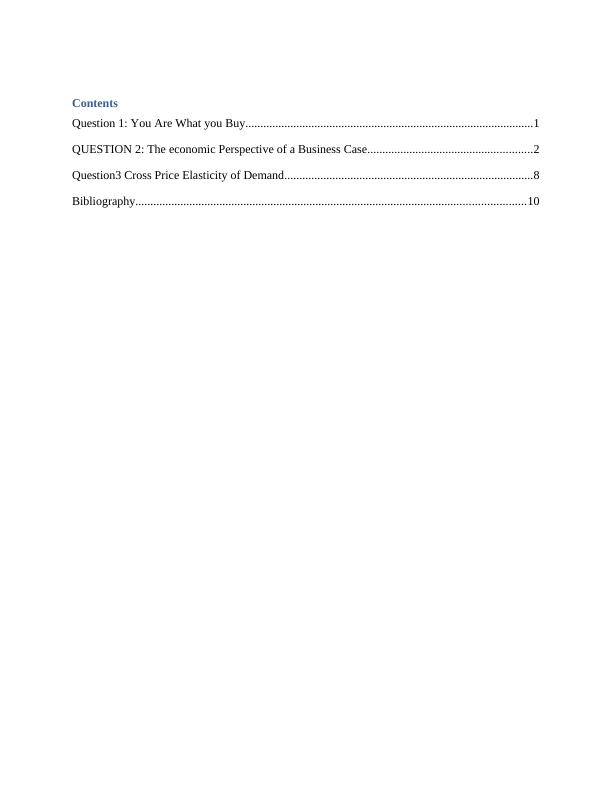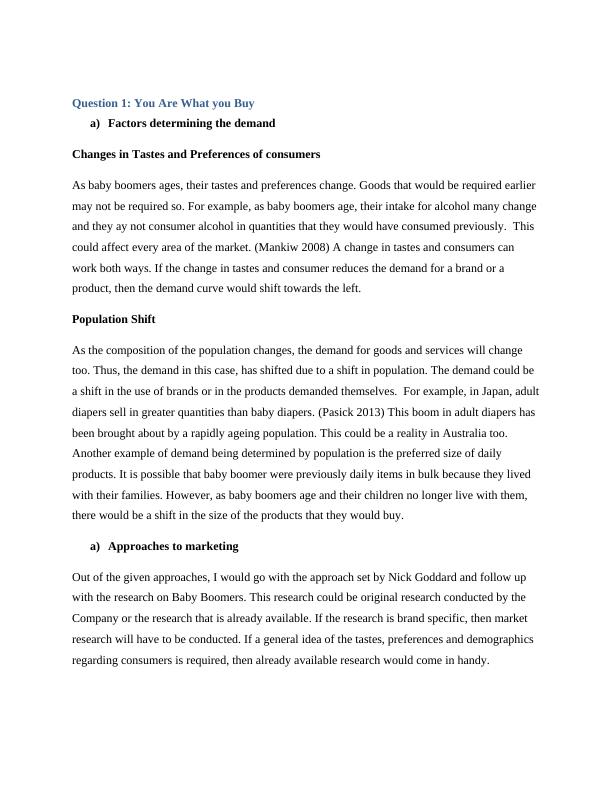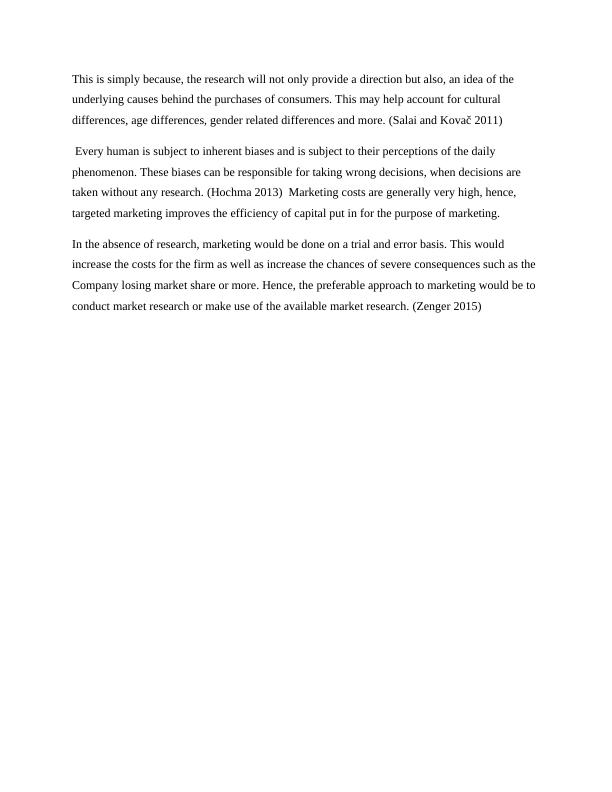Factors determining demand, approaches to marketing, and economic perspective of business case
The assignment aims to apply economic concepts in business environments and communicate economic analyses for business and government policy decision-making.
13 Pages3150 Words100 Views
Added on 2023-06-12
About This Document
This study material covers factors determining demand such as changes in tastes and preferences, population shift, and approaches to marketing. It also discusses the economic perspective of a business case with a focus on the taxi industry in Australia and the cross price elasticity of demand between coal and natural gas. Course code, course name, and college/university are not mentioned.
Factors determining demand, approaches to marketing, and economic perspective of business case
The assignment aims to apply economic concepts in business environments and communicate economic analyses for business and government policy decision-making.
Added on 2023-06-12
ShareRelated Documents
End of preview
Want to access all the pages? Upload your documents or become a member.
Demographic Trends in Consumption: Effects on Consumer Behavior and Marketing Strategy
|14
|2112
|222
Consumer Behavior
|6
|1484
|89
ATMC BUS502 Principles of Economics for Accountants
|4
|832
|50
Selecting a Product to Study in Microeconomics
|10
|2437
|417
Business Economics Assignment (PDF)
|16
|3646
|375
ATMC BUS502 Principles of Economics for Accountants - Assessment Task 2
|4
|876
|23




